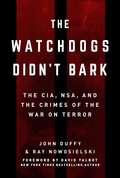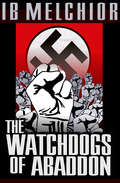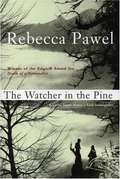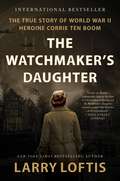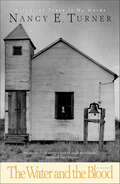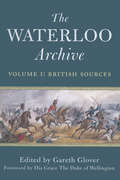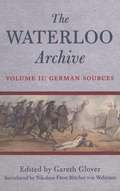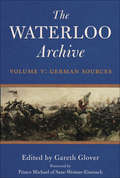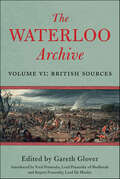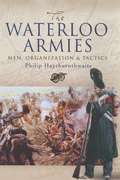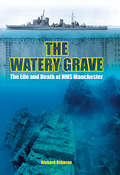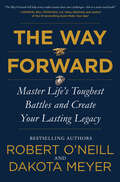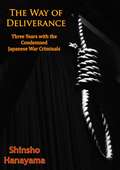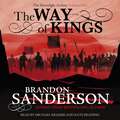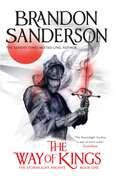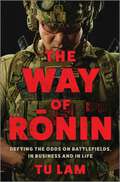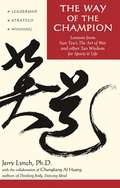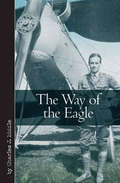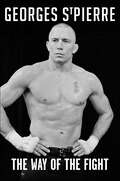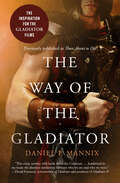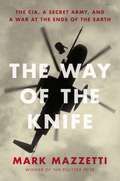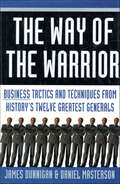- Table View
- List View
The Watchdogs Didn't Bark: The CIA, NSA, and the Crimes of the War on Terror
by John Duffy Ray NowosielskiThe Shocking Reexamination of Unexplored Failures by Government Officials to Use Available Intelligence to Stop the Events of September 11th In 2009, documentarians John Duffy and Ray Nowosielski arrived at the offices of Richard Clarke, the former counterterror adviser to Presidents Clinton and Bush. In the meeting, Clarke boldly accused one-time Central Intelligence Agency director George Tenet of “malfeasance and misfeasance” in the pre-war on terror. Thus began an incredible—never-before-told—investigative journey of intrigue about America’s intelligence community and two 9/11 hijackers. The Watchdogs Didn’t Bark details that story, unearthed over a ten-year investigation. Following the careers of a dozen counterterror employees working in different agencies of the US government from the late 1980s to the present, the book puts the government’s systems of oversight and accountability under a microscope. At the heart of this book is a mystery: Why did key 9/11 plotters Khalid Al Mihdhar and Nawaf Al Hazmi, operating inside the United States, fall onto the radars of so many US agencies without any of those agencies succeeding in stopping the attacks? The answers go beyond mere “conspiracy theory” and “deep state” actors, but instead find a complicated set of potential culprits and an easily manipulated system. Taking readers on a character-driven account of the causes of 9/11 and how the lessons of the attacks were cynically inverted to empower surveillance of citizens, kidnapping, illegal imprisonment, torture, government-sanctioned murder, and a war on whistleblowers and journalists, an alarm is raised which is more pertinent today than ever before.
The Watchdogs of Abaddon
by Ib MelchiorHitler&’s minions live in Los Angeles A brutal street killing. A tough LA cop. A faded snapshot. A poster adorned with a swastika. A cruel nightmare of bloody intrigue. A sensational thriller, violent as a burst of machine gun fire. Hitler&’s evil is reborn. The Third Reich will rise again!
The Watcher in the Pine
by Rebecca Pawel"Absolutely riveting. . . . Rebecca Pawel's first act of surprising courage is to make her main character not one of the romantic Republicans of folk song and Hemingway story but an officer of their much-hated enemy, the dreaded Guardia Civil. "-Chicago Tribune "[Rebecca Pawel's] expansive knowledge of the city and the era brings alive its grim streets and harsh martial law. . . . This is a fascinating tale from a promising young writer; I'm already looking forward to her next book. "-Rocky Mountain News "The immediate aftermath of the Spanish Civil War provides the bleak setting for Pawel's stirring first novel. . . . Unsparing in her depiction of the casual brutalities spawned by war, but also offers evidence of the power of little civilities and kindnesses in a novel that easily transcends the formulaic crime story. "-Publishers Weekly (starred) "Pawel anchors a tense and exciting story with a terrific and complex plot. "-Detroit Free Press Spain, 1940. A mountain village is Carlos Tejada's first independent command. But he soon discovers that this "promotion" is a mixed blessing. There is no one to meet the train when he and his wife arrive, the officers of the small Guardia Civil post are far from welcoming. Is it just that they are suspicious of an officer with a Republican sympathizer for a wife? Tejada discovers that the officer he is replacing was shot to death and that the village is a center of smuggling and guerrilla activity. And then worse befalls: a new outbreak of the Civil War, financed from abroad, may be about to take place with his post as its epicenter. Tejada must ultimately find a way to reconcile his duty with his love for his wife.
The Watchmaker's Daughter: The True Story of World War II Heroine Corrie ten Boom
by Larry LoftisNew York Times bestselling author and master of nonfiction spy thrillers Larry Loftis writes the first major biography of Corrie ten Boom, a Dutch watchmaker who saved the lives of hundreds of Jews during WWII—at the cost of losing her family and being sent to a concentration camp, only to survive, forgive her captors, and live the rest of her life as a Christian missionary.The Watchmaker’s Daughter is one of the greatest stories of World War II that readers haven’t heard: the remarkable and inspiring life story of Corrie ten Boom—a groundbreaking, female Dutch watchmaker, whose family unselfishly transformed their house into a hiding place straight out of a spy novel to shelter Jews and refugees from the Nazis during Gestapo raids. Even though the Nazis knew what the ten Booms were up to, they were never able to find those sheltered within the house when they raided it.Corrie stopped at nothing to face down the evils of her time and overcame unbelievable obstacles and odds. She persevered despite the loss of most of her family and relied on her faith to survive the horrors of a notorious concentration camp. But even more remarkable than her heroism and survival was Corrie’s attitude when she was released. Miraculously, she was able to eschew bitterness and embrace forgiveness as she ministered to people in need around the globe. Corrie’s ability to forgive is just one of the myriad lessons that her life story holds for readers today.Reminiscent of Schindler’s List and featuring a journey of faith and forgiveness not unlike Unbroken, The Watchmaker’s Daughter is destined to become a classic work of World War II nonfiction.
The Water and the Blood: A Novel
by Nancy E. TurnerI turned and faced the road we'd come down, my face hard and set. The kids moved on without me. I could still see a slight glow and the murky, gray smoke reaching above the trees, where it spread to the south....When I thought they were out of earshot, I took a deep breath. "You lied to me," I whispered toward the building, to all the people it represented, to the hours I'd spent on those hard, split-log seats, and to my childish epiphanies born there .... "You lied," I said. "These are my best friends now."Rare is the gift of a writer who is able to conjure up the voices of very different worlds, to give them heat and power and make them sing. Such is the talent of Nancy E. Turner. Her beloved first novel, These Is My Words, opened readers to the challenges of a woman's life in the nineteenth-century Southwest. Now this extraordinary writer shifts her gaze to a very different world -- East Texas in the years of the Second World War -- and to the life of a young woman named Philadelphia Summers, known against her will as Frosty.From the novel's harrowing opening scene, Frosty's eyes survey the landscape around her -- white rural America -- with the awestruck clarity of an innocent burned by sin. In her mother and sisters she sees fear and small-mindedness; in the eyes of local boys she sees racial hatred and hunger for war. When that war finally comes, it offers her a chance for escape -to California, and the caring arms of Gordon Benally a Native-American soldier. But when she returns to Texas she must face the rejection of a town still gripped by suspicion -- and confront the memory of the crime that has marked her soul since adolescence.Propelled by the quiet power of one woman's voice, The Water and the Blood is a moving and unforgettable portrait of an America of haunted women and dangerous fools -- an America at once long perished and with us still.
The Waterloo Archive Volume I: Volume 1: British Sources (The Waterloo Archive #1)
by His Grace the Duke of WellingtonOriginally published in 1900, this book features excerpts from Alexander Cavali Mercer's account of the battle of Waterloo. As an artillery officer at the sharp end, this is his eye-witness account of the events that lead to Napoleon's final defeat in June 1815. This is the contemporary view of how the events were conveyed to the public of Great Britain. Featuring original engravings from the Illustrated London News and the Graphic, and many paintings from the era, this book was written during the height of the British Empire, and the triumphalist mood of the day is reflected in the tone of the text. This detailed military history provides an echo of the contemporary attitudes to this turbulent time which shaped the destiny of the British Empire. This book is part of the 'Military History From Primary Sources' series, a new military history range compiled and edited by Emmy Award winning author and historian Bob Carruthers. The series draws on primary sources and contemporary documents to provide a new insight into the true nature of warfare. The series consultant is David Mcwhinnie, creator of the award winning PBS series 'Battlefield'.
The Waterloo Archive Volume II: German Sources (The Waterloo Archive #2)
by Nikolaus Fürst Blücher von WahlstattHistories of the Waterloo campaign and tours of the battlefield generally concentrate on the battle between the armies of Napoleon and Wellington - the role of Blucher's Prussians is left in the background. Peter Hofscher's fascinating account focuses on the Prussians at the Battle of Waterloo and on their critical but often neglected contribution to the battle. He tells the story of the grueling Prussian advance towards the battlefield and he records the ferocious and decisive fight that broke out when they arrived. At every stage he allows the reader to follow in the footsteps of the Prussian soldiers as they struggled across the Belgian countryside almost 200 years ago.
The Waterloo Archive Volume V: German Sources (The Waterloo Archive #5)
by Prince Michael of Saxe-Weimar-EisenachThe British archives of the Napoleonic wars are unique, brimming with personal letters to family and friends or journals that record their innermost thoughts. The human aspect of war comes to the fore, the humor and exhilaration; the fears and miseries; the starvation and exhaustion; the horror and the joy.It is usually accepted that very few common soldiers of this period could read or write and that the few letters and journals that do exist emanate from more senior officers, who were required to be able to write to perform their duties. Volume I proved this to be a fallacy, and this volume continues with a further three accounts, and shows how the ordinary soldier saw things, giving a different aspect to our studies. Also included:* The poignant final letters of older family men such as Major Arthur Heyland, jar noticeably with the bawdy and carefree scribbles of youth by such as Ensign Kinchant (including describing his visits to bordellos) who also lost his life that day. * A long series of letters by Lieutenant Frederick Johnston of the 6th Inniskillings and of Lieutenant George Blathwayt of the 23rd Light dragoons sheds important light on cavalry regiments who have few previously published memoirs. * A very interesting letter by Second Lieutenant Richard Cocks Eyre of the 2nd Battalion 95th Rifles makes a mockery of the myth that British troops did not openly plunder the local farmhouses before the battle for food and fuel to burn. *A letter by a civilian visitor to the area six weeks after the battle ends this volume, which will engage and fascinate the reader.
The Waterloo Archive: Volume VI: British Sources
by Gareth GloverSo much has been written on the subject of the Battle of Waterloo and the campaign that surrounds it that the reader might think that there is simply nothing new to tell. However, the archives of Europe are teeming with fascinating documents personal letters to family and friends, private journals and official reports that have been virtually ignored in many standard histories of the period. In the ground-breaking Waterloo Archive series Gareth Glover has set out to unearth this buried material and to finally expose it to public scrutiny. In doing so he brings the human aspect of war and military campaigning to the fore: the humor and exhilaration, the fears and miseries, the starvation and exhaustion, the horror and the joy. He also provides an invaluable new source which will challenge preconceptions, disprove theories, destroy myths and allow for a complete re-evaluation of many key aspects of the campaign. In this sixth and final volume in the series, published to coincide with the two hundredth anniversary of the campaign, Glover has again turned his attention to the British sources.
The Waterloo Armies: Men, Organization & Tactics
by Philip HaythornthwaiteGerman troops formed the majority of Wellingtons forces present at the Battle of Waterloo including those of Nassau, Brunswick, Hanover and the Kings German Legion, and they have left a large number of first-hand accounts of their role in the battle.The actions of the King's German Legion an integral part of the British Army and partly officered by British soldiers has been published in English, but to a limited degree: Herbert Siborne published letters written to his father; Ompteda and Wheatley have had their memoirs published; and History of the Kings German Legion included a small number of letters, including the oft-misquoted account of the defence of La Haye Sainte by Major Baring. This forms a tiny proportion of the German material available. Therefore it is not surprising that early British histories of the battle have largely sidelined the achievements of the German troops, and this has been regurgitated by most that have followed. This situation did not change until the 1990s when Peter Hofschroer published his two-volume version of the campaign from the German perspective, which included snippets of German documents published in English for the first time. But even this proved not totally satisfactory, as it did not provide the whole document to allow full interpretation. There is a great need to provide an English version of much of the original German source material to redress the imbalance; this volume is intended to remedy that situation by publishing sixty of these reports and letters fully translated into English for the first time, giving a clearer insight into the significant role these troops played. Gareth Glover is a historian specialising in the Waterloo campaign and the Peninsular War. He left school at eighteen to join the Royal Navy as a Seaman Officer and completed his extensive training course at Dartmouth College. He has published articles in The Waterloo Journal and the Journal of the Royal Artillery, and a novel about Waterloo, Voices of Thunder.Christmas Selection 2010, Napoleon.org website
The Waterloo Campaign in 100 Locations
by John GrehanIn the 200 years since the famous battle in the muddy, bloody fields of Waterloo, almost every aspect of the fighting has been examined and analyzed, apart from one – that of finding and illustrating locations relating to the campaign. From Napoleon’s landing on the Golfe Juan on France’s Côte d’Azur, along the Route Napoleon and through Grenoble, the Emperor’s journey back to Paris, and back to power, is shown in glorious full color. In this beautifully produced book, we see where Napoleon distributed the Imperial Eagles to the regiments of his army, and where his forces assembled before marching to war, and where the Due of Wellington’s Anglo-Allied army gathered in Brussels. The camera follows the initial encounters on the banks of the River Sambre and the maneuvering of the French and Coalition forces leading to the first great battles of the campaign at Quatre Bras and Ligny. The key sites occupied by the opposing armies at these battles are investigated as are the routes of the withdrawal to Mont St Jean by Wellington’s army and to Wavre by Blücher’s Prussians. The Waterloo battlefield and its associated buildings are examined in pictorial detail, as are the locations which marked the pivotal moments of the battle. The sites of the corresponding battle at Wavre are also shown, as well as the pursuit of the two wings of beaten French Army, including the sieges of the fortresses by the British army, before Paris was finally reached. The uprising in the Vendée and the last clashes of the campaign before Napoleon’s abdication are also featured. The book closes with Napoleon’s journey from Paris to St Helena via l'Île d’Aix and Plymouth. Headquarters buildings, observation posts, monuments and memorials, bridges and battlefields, and the principal locations of the campaign are portrayed in unique photographs – and behind every plague and place is a tale of political posturing, military maneuvering, sacrifice and savagery. Together these images tell the story of Napoleon’s greatest gamble, and we know that a picture is worth a thousand words!
The Watery Grave: The Life and Death of HMS Manchester
by Richard OsborneIn 2002 the wreck of a British cruiser was located by divers off the coast of Tunisia. The stunning photographs of the wreck inspired Dr Richard Osborne to delve into the controversy surrounding the loss of one of the Royal Navy's proudest ships HMS Manchester. After taking part in the Norway campaign of 1940, Manchester was sent to the Mediterranean, where she was involved in the dangerous Malta convoys. On her first convoy she was struck by a torpedo and badly damaged. In danger of sinking at any minute, her skipper, Captain Harold Drew, managed to save his ship.Her next operation was to prove her last. In Operation Pedestal, the vital Malta relief convoy, Manchester was again hit by a torpedo. This time, rather than risk the lives of his crew Drew decided to scuttle his ship. For this Drew was court-martialled in what would become the longest such case in the history of the Royal Navy.Using the testimony of those involved, the highly respected naval historian Dr Osborne pieces together one of the most intriguing stories to emerge from the Second World War. Coupled with photographs of the wreck and a detailed account of its discovery, The Watery Grave: The Life and Death of HMS Manchester, will shed new light on this remarkable tale.
The Way Forward: Master Life's Toughest Battles and Create Your Lasting Legacy
by Robert O'Neill Dakota Meyer“The Way Forward will help every reader master their own challenges—this is a must-read book!” —Admiral Bill McRaven, U.S. Navy (Retired) and author of the #1 New York Times bestseller Make Your BedAmerican Sniper meets Make Your Bed in these life lessons from decorated United States service members and New York Times bestselling authors Robert O’Neill and Dakota Meyer—an in-depth, fearless, and ultimately redemptive account of what it takes to survive and thrive on battlefields from Afghanistan and Iraq to our daily lives, and how the perils of war help us hold onto our humanity.Rob O’Neill and Dakota Meyer are two of the most decorated and recognized US service members: O’Neill killed the world’s most wanted man, Osama bin Laden, and Meyer was the first living Marine to receive the Medal of Honor since the Vietnam War. But beyond their actions and courage in combat, O’Neill and Meyer also have much in common in civilian life: they are both sought-after public speakers, advocates for veterans, and share a non-PC sense of humor. Combining the best of military memoirs and straight-talking self-help, The Way Forward alternates between O’Neill’s and Meyer’s perspectives, looking back with humor at even the darkest war stories, and sharing lessons they learned along the way.The Way Forward presents O’Neill and Meyer’s philosophy in combat and life. This isn’t a book about the glory of war and combat, but one about facing your enemies, some who are flesh and blood and some that are not: Your thoughts. Your doubts. Your boredom and your regrets. From Rob’s dogged repetition at the free throw line of his childhood basketball court to Dakota’s pursuit of EMT and firefighter credentials to aid accident victims, these two American heroes turn their experiences into valuable lessons for every reader. Gritty and down-to-earth, O’Neill and Meyer tell their stories with candor and vulnerability to help readers handle stress, tackle their biggest obstacles, and exceed their expectations of themselves, while keeping life’s battles in perspective with a sense of humor.
The Way of Deliverance: Three Years with the Condemned Japanese War Criminals
by Hideo Suzuki Shinsho HanayamaOriginally published in 1950, this is the English translation of the book written by the Buddhist chaplain in Sugamo Prison who attended the Japanese war criminals before their execution. It is a collection of the records of the condemned that Shinsho Hanayama collected during his spiritual guidance in order to show "an ardent hope for peace" as well as an "awakening to religious ecstasy."Hanayama tells of the services held, the preparation of the men for death, the traditional rites, and the prisoners' deepening reverence as the days passed. He also recorded in details the last words, wills and letters of 27 condemned prisoners, and later those of the seven A class war criminals sentenced to death by hanging for war crimes, crimes against humanity, and crimes against peace--including General Hideki Tōjō (later Prime Minister of Japan), who was responsible for ordering the attack on Pearl Harbor.A fascinating, historically significant read.
The Way of Kings: The Stormlight Archive Book One (STORMLIGHT ARCHIVE)
by Brandon Sanderson'I loved this book. What else is there to say?' Patrick RothfussAccording to mythology mankind used to live in The Tranquiline Halls. Heaven. But then the Voidbringers assaulted and captured heaven, casting out God and men. Men took root on Roshar, the world of storms. And the Voidbringers followed...They came against man ten thousand times. To help them cope, the Almighty gave men powerful suits of armor and mystical weapons, known as Shardblades. Led by ten angelic Heralds and ten orders of knights known as Radiants, mankind finally won.Or so the legends say. Today, the only remnants of those supposed battles are the Shardblades, the possession of which makes a man nearly invincible on the battlefield. The entire world is at war with itself - and has been for centuries since the Radiants turned against mankind. Kings strive to win more Shardblades, each secretly wishing to be the one who will finally unite all of mankind under a single throne.On a world scoured down to the rock by terrifying hurricanes that blow through every few day a young spearman forced into the army of a Shardbearer, led to war against an enemy he doesn't understand and doesn't really want to fight. What happened deep in mankind's past? Why did the Radiants turn against mankind, and what happened to the magic they used to wield?
The Way of Kings: The first book of the breathtaking epic Stormlight Archive from the worldwide fantasy sensation (STORMLIGHT ARCHIVE #1)
by Brandon SandersonThe groundbreaking first book of an epic series that has changed the face of fantasy. The Way of Kings begins The Stormlight Archive.Speak again the ancient oaths:Life before death.Strength before weakness.Journey before Destination.Return to men the Shards they once bore.The Knights Radiant must stand again.Roshar is a world of stone and storms. Uncanny tempests of incredible power sweep across the rocky terrain so frequently that they have shaped ecology and civilization alike. Animals hide in shells, trees pull in branches, and grass retracts into the soilless ground. Cities are built only where the topography offers shelter.It has been centuries since the fall of the ten consecrated orders known as the Knights Radiant, but their Shardblades and Shardplate remain: mystical swords and suits of armor that transform ordinary men into near-invincible warriors. Men trade kingdoms for Shardblades. Wars were fought for them, and won by them.One such war rages on a ruined landscape called the Shattered Plains. There, Kaladin, who traded his medical apprenticeship for a spear to protect his little brother, has been reduced to slavery. In a war that makes no sense, where ten armies fight separately against a single foe, he struggles to save his men and to fathom the leaders who consider them expendable.Brightlord Dalinar Kholin commands one of those other armies. Like his brother, the late king, he is fascinated by an ancient text called The Way of Kings. Troubled by over-powering visions of ancient times and the Knights Radiant, he has begun to doubt his own sanity.Across the ocean, an untried young woman named Shallan seeks to train under an eminent scholar and notorious heretic, Dalinar's niece, Jasnah. Though she genuinely loves learning, Shallan's motives are less than pure. As she plans a daring theft, her research for Jasnah hints at secrets of the Knights Radiant and the true cause of the war.Readers love The Way of Kings:'A masterpiece series in epic fantasy' Novel Notions'It's multi-POV, action-packed, heartfelt, exciting, thrilling' Goodreads reviewer, ⭐ ⭐ ⭐ ⭐ ⭐'The story is mind-blowing' Goodreads Reviewer, ⭐ ⭐ ⭐ ⭐ ⭐'[It's] elevated the art of storytelling to a different league' Goodreads reviewer, ⭐ ⭐ ⭐ ⭐ ⭐'Introduces a series that will change the history of Fantasy' Goodreads reviewer, ⭐ ⭐ ⭐ ⭐ ⭐'I really wish I could give The Way of Kings a sixth star' Goodreads reviewer, ⭐ ⭐ ⭐ ⭐ ⭐Other books by Brandon SandersonThe CosmereThe Stormlight ArchiveThe Way of KingsWords of RadianceEdgedancer (Novella)OathbringerRhythm of WarWind and TruthThe Mistborn SagaMistbornThe Well of AscensionThe Hero of AgesThe Alloy of LawShadows of SelfThe Bands of MourningThe Lost Metal
The Way of Ronin: Defying the Odds on Battlefields, in Business and in Life
by Tu LamFrom Special Forces veteran and internationally respected teacher of Ronin Tactics to streaming and videogame fan favorite, Tu Lam&’s memoir will captivate, astonish, exhilarate, and even profoundly resonate.Tu Lam has become known not just for his accomplishments as a decorated Green Beret, but also for his work outside the military, including: Training citizens and law enforcement professionals all over the country Providing aid to both active and retired soldiers with physical and mental health issues Co-hosting the History Channel&’s Forged in Fire: Knife or Death Appearing in and contributing to the world&’s bestselling video game, Call of Duty: Modern WarfareIn The Way of Ronin, he reveals his against-all-odds story. Tu Lam&’s resilience, dedication, and relentless pursuit of freedom saw him achieving Full Spectrum US Special Operations across twenty-seven countries worldwide for more than twenty years, only to pay the price of his own physical and mental trauma as well as addiction.That decision led him to more than two decades of grueling instruction in every facet of the special forces, then deployment to war and conflict zones—all while channeling his inner anger in secret underground no-holds-barred fighting matches. When he finally retired from the military after more than two decades, his demons caught up with him, leading to years of addiction. But even that didn&’t defeat him. Confronting his demons, he emerged triumphant. Now he shares the gripping details and riveting intricacies of this awe-inspiring journey.Tu Lam&’s life is, at times, all too real, and at many others times, almost unbelievable. For fans of Jocko Willink and David Goggins, The Way of Ronin is an ultimately triumphant autobiography of what one man can accomplish against seemingly insurmountable odds.
The Way of the Champion: Lessons from Sun Tzu's the Art of War and Other Tao Wisdom for Sports & Life
by Chungliang Al Huang Jerry LynchMartial artists, great warriors, coaches, generals, and successful corporate CEOs have all effectively used the strategies for winning found in Sun Tzu's Art of War.<P><P>Authors Jerry Lynch and Chungliang Al Huang, using lessons from the The Art of War, as well as other ancient Taoist books such as the I Ching and Tao Te Ching, teach readers to develop the capacities and qualities that make a champion-such as high self-esteem, courage, fortitude, determination, perseverance, tenacity, self-awareness, integrity, the ability to take risks, and the ability to learn from failure.The emphasis on self-awareness, tactical positioning, and strategic advantage means that practitioners win through inner growth and self-improvement-giving them a universal competitive edge.
The Way of the Eagle (Vintage Aviation Library)
by Charles J. BiddleA classic aviation memoir: an American pilot&’s account of air combat in the First World War. Charles J. Biddle, a Philadelphia native, was active in France beginning in 1917, where he flew as a volunteer, initially for the French in Escadrille 73, and then in the American 103rd Aero Squadron, the Lafayette Escadrille, and then the 13th Aero Squadron and 4th Pursuit Group, which he commanded. His memoir was published shortly after his return to the United States and provides an immediacy lacking in other books that were written later. Accounts of US pilots from this period are relatively rare, and this one paints a compelling picture of a group of Americans fighting as volunteers for the French. Biddle&’s US compatriots soon established their own capability and wrung free of French direction—and as this book reveals, it was largely because of their combat prowess. For his service, Biddle was awarded the French Legion of Honour, the Croix de Guerre, the American Distinguished Service Cross, and the Belgian Order of Leopold II. This memoir gives us a unique perspective on America&’s participation in the Great War.
The Way of the Fight
by Georges St-PierreA NEW YORK TIMES BESTSELLERFrom the world’s most popular UFC fighter, Georges “Rush” St. Pierre, comes a startlingly honest portrait of a fighter’s journey, highlighting the lessons that propelled his rise from bullying victim to internationally celebrated athlete and champion.There’s more to winning battles than fists and feetFor world-renowned professional fighter Georges St-Pierre, the greatest asset is not physical strength or athleticism—it’s a sense of purpose. From his beginnings as a small, mercilessly bullied child first discovering karate to his years as a struggling garbage collector who spent all his free time in the gym, his hard-fought rise in the sport of mixed martial arts, and his long, painful recovery from a career-threatening injury, Georges never lost sight of his ambition to become the greatest martial artist of all time. In The Way of the Fight, Georges for the first time reveals what propelled him not only to become a champion but to embrace obstacles as opportunities to build character.The Way of the Fight is an inspirational look into the mindset of a master. To Georges, all life is competition, and there’s no more perfect metaphor for competition than the life of a fighter. He explains the value of discipline, risk and even fear, with the wisdom of one who knows that nothing is assured—his next fight could always be his last. Drawing inspiration from fighting legends, Eastern philosophy and a trusted inner circle, The Way of the Fight is a powerful, life-changing guide to living with purpose and finding the way to accomplish your loftiest goals.
The Way of the Gladiator: Inspiration for the Gladiator Films
by Daniel P. MannixThe book that inspired the stories of Gladiator & Gladiator II: Step into the ring with this classic, in-depth account of the ancient Romans&’ obsession with the bloody and brutal games.&“[The Way of the Gladiator is] this crazy, tawdry, wild book about the Coliseum. . . . It hardwired in my brain the absolute similarities between who we are and who we were.&” —David Franzoni, Academy Award–nominated screenwriter of Gladiator and producer of Gladiator IIOriginally published under the title Those About to Die. &“If you can imagine a superior American sports writer suddenly being transported back in time to cover the ancient Roman games, you will have some idea of the flavor and zest of The Way of the Gladiator,&” said the Los Angeles Times about Daniel P. Mannix&’s century-by-century—and nearly moment-by-moment—narrative of the Roman Empire&’s national institution. Putting the games in the context of Rome&’s rise and dramatic fall, Mannix captures all the history, planning, and savage pageantry that went into creating the first spectator sports. The games began in 238 BC as nearly county fair–like entertainment, with trick riding, acrobats, trained animals, chariot racing, and athletic events. The contests then evolved into slave fights thanks to wealthy patricians Marcus and Decimus Brutus, who wanted to give their father an unforgettable funeral by reviving an old tradition. What the brothers wrought, Rome devoured, demanding even greater violence to satisfy the bloodlust of the crowd. Architectural wonders in themselves, massive arenas like Circus Maximus and the Colosseum were built, able to host sea battle reenactments on actual water. Successful gladiators found fame, fortune—and freedom. But as Rome began to fall in the fifth century, so did the games, devolving into nothing more than pointless massacres. In the end, millions of humans and animals were sacrificed in barbaric displays. What were once ceremonies given in honor of gods met an inglorious fate, yet they still captivate—in book and in film—the imagination of people today.
The Way of the Heavenly Sword: The Japanese Army in the 1920's
by Leonard HumphreysThis text examines the history of the Japanese army in the 1920s. In this decade, the 'Meija military system' disintegrated and was replaced by a new 'Imperial Army System'. The Japanese victory over Russia in 1905 had changed the direction of Japanese military thought from almost total dependence on western rational military thinking to a more traditional reliance on morale as the preponderant factor for victory in combat. The author focuses on the intense and complex struggle which took place over leadership of the Army, the application of the principle of the primacy of morale, and the quite contradictory but obvious necessity for the army to modernize. This internal turmoil was intensified by a background of increasingly difficult economic circumstances, and the terrible effects of the great earthquake and fire of 1923. This crucial decade of Japanese history set the stage for the shattering events of the 1930s and 1940s.
The Way of the Knife: The CIA, a Secret Army, and a War at the Ends of the Earth
by Mark MazzettiA Pulitzer Prize-winning reporter's riveting account of the transformation of the CIA and America's special operations forces into man-hunting and killing machines in the world's dark spaces: the new American way of war. The most momentous change in American warfare over the past decade has taken place away from the battlefields of Afghanistan and Iraq, in the corners of the world where large armies can't go. The Way of the Knife is the untold story of that shadow war: a campaign that has blurred the lines between soldiers and spies, and lowered the bar for waging war across the globe. America has pursued its enemies with killer drones and special operations troops; trained privateers for assassination missions and used them to set up clandestine spying networks; and relied on mercurial dictators, untrustworthy foreign intelligence services, and proxy armies. This new approach to war has been embraced by Washington as a lower risk, lower cost alternative to the messy wars of occupation and has been championed as a clean and surgical way of conflict. But the knife has created enemies just as it has killed them. It has fomented resentments among allies, fueled instability, and created new weapons unbound by the normal rules of accountability during wartime. Mark Mazzetti tracks an astonishing cast of characters on the ground in the shadow war, from a CIA officer dropped into the tribal areas to learn the hard way how the spy games in Pakistan are played to the chain-smoking Pentagon official running an off-the-books spy operation, from a Virginia socialite whom the Pentagon hired to gather intelligence about militants in Somalia to a CIA contractor imprisoned in Lahore after going off the leash. At the heart of the book is the story of two proud and rival entities, the CIA and the American military, elbowing each other for supremacy. The CIA, created as a Cold War espionage service, is now more than ever a paramilitary agency ordered by the White House to kill off America's enemies--in the mountains of Pakistan and the deserts of Yemen, in the tumultuous civil wars of North Africa and the chaos of Somalia. For its part, the Pentagon has become more like the CIA, dramatically expanding spying missions everywhere. Sometimes, as with the raid that killed Osama bin Laden, their efforts have been perfectly coordinated. Other times, including the failed operations disclosed here for the first time, they have not. For better or worse, their struggles will define American national security in the years to come.
The Way of the Warrior
by Diane CareyThe entire Alpha Quadrant has been threatened with deadly infiltration by the shape-shifting Founders of the Dominion. Already the Romulans and Cardassians have been decimated by the clandestine machinations of the Founders. Now the newly promoted Captain Benjamin Sisko of Deep Space Nine has another problem: a massive fleet of Klingon warships has arrived at DS9 on a secret mission. Unable to learn anything from an elusive Klingon general, Sisko turns to Lt. Commander Worf, formerly of the Starship Enterprise and the only Klingon in Starfleet, to try and uncover the truth. What Worf learns will have a profound impact on the future of the Alpha Quadrant, and Sisko must risk destroying the Federation-Klingon alliance to prevent a full-scale war!
The Way of the Warrior: Business Tactics and Techniques from History's Twelve Greatest Generals
by Daniel Masterson James DunniganBusiness and war: both are forms of conflict, and both have more in common than people think. Business, like war, is the art of outdoing the competition. Businesses, like armies, need to practice strategic thinking and understand the nature of competitive conflict. CEOs devise business plans to win in the marketplace; generals use strategic thinking to win wars.In The Way of the Warrior James Dunnigan and Daniel Masterson reveal the management lessons of history's finest twelve military leaders, including: Alexander the Great, on having vision; Genghis Khan, on quick decisions; Julius Caesar, on communication; Napoleon, on managing change; Ulysses S. Grant, on the art of the turnaround; Douglas MacArthur, on coping with disaster; and Norman Schwarzkopf, on building alliances. The management hubris of these men is directly applicable in today's business world.Comprehensive, insightful, and extremely accessible, The Way of the Warrior won't show you how to call in air strikes on the competition, but it will show you how to be a manager who never loses his cool under fire.
